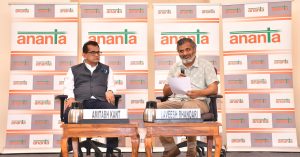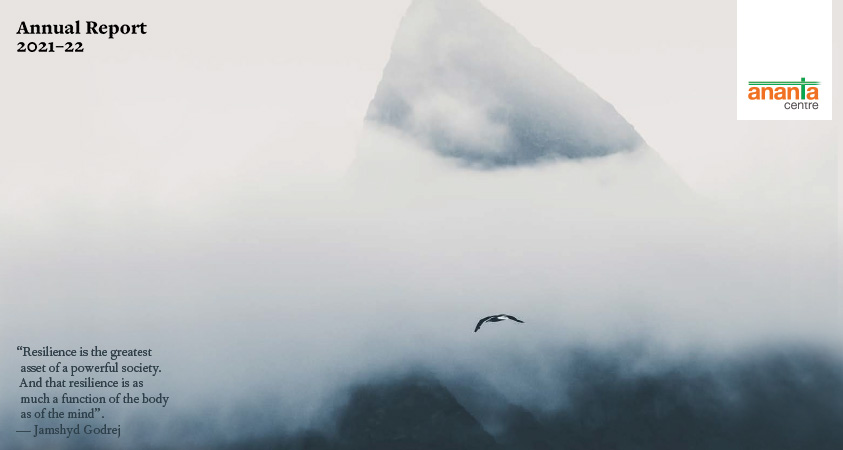Budget challenges arise from India’s latest GDP numbers
In the run-up to the presentation of the Interim Budget for 2024-25, the National Statistical Office’s (NSO) latest data on India’s economic growth contained many messages for policy makers and observers of the Indian economy. Gross domestic product or GDP, according to NSO, was expected to grow by 7.3 per cent in 2023-24, higher than even the estimate of 7 per cent put out by the Reserve Bank of India (RBI). The higher estimate came as a surprise as the first half of 2023-24 had clocked a growth rate of 7.7 per cent, which meant that the second half will have to grow by 6.95 per cent, a performance that could be challenging given the higher base effect of last year and the slowing drivers of growth both on the demand side (or investments) and the supply side (or production). Compared with a 7.2 per cent growth rate in 2022-23, the current year’s pace would be marginally slower, but the continued buoyancy would be driven by investments, according to NSO’s data. Even though the Centre’s capital expenditure has slowed in the months of October and November (its growth rate in the first half of 2023-24 was 43 per cent, but it slipped to 31 per cent by the end of November 2023), the NSO data estimated investment growth to be in double digits – at 10.3 per cent, compared to 11.4 per cent in 2022-23. A GDP growth rate of 7.3 per cent in 2023-24 is also supported by government expenditure, whose growth is expected to improve to over 4 per cent, compared to a muted 0.1 per cent growth recorded a year ago. On the supply side, the GDP estimate will be helped by a healthy growth rate in construction and services at 10.7 per cent and 7.7 per cent, respectively (although a little lower than the respective figures of 10 per cent and 9.5 per cent in 2022-23). Equally important, a smart revival in the manufacturing sector is expected in 2023-24 at 6.5 per cent, compared to 1.3 per cent in the previous year. But these numbers from NSO also give rise to three worry points. One, agriculture is expected to grow by only 1.8 per cent in 2023-24, signifying a major slowdown from over 4 per cent growth in 2022-23. Rural demand may be adversely affected and could undermine the economy’s growth potential. Two, India’s private consumption demand in 2023-24 will remain tepid – with a growth rate of 4.4 per cent, compared to 7.5 per cent in the previous year. Such a slowdown could dampen prospects of an early investment revival particularly in the private sector. And three, India’s nominal GDP in 2023-24 is expected to grow by 8.9 per cent, significantly down from 16.1 per cent recorded in the previous year. Seen against continued rise in tax collections, the lower nominal size of the economy indicates an improvement in tax buoyancy, but the lower number will also pose a few difficult questions to the makers of the 2024-25 Budget – both with respect to inflation and the economy’s growth dynamics.
Muted farm growth poses concerns before general elections
The first advance estimates (FAE) of India’s national income for 2023-24 offered a fresh perspective on the performance of India’s agriculture. The agriculture sector was expected to report a seven-year low growth rate of 1.8 per cent in the current year, largely because of a poor kharif harvest and estimates of weak sowing of rabi crops. In 2022-23, agriculture had reported a growth rate of 4 per cent. Even though this estimate is likely to be revised upwards as data on fresh sowing in the rabi season trickle in, the initial estimate of 1.8 per cent growth is disappointing in a year just before general elections are to be held in May 2024. Agriculture accounts for about 44 per cent of the country’s total workforce. Yet, this huge workforce has a share of only about 18 per cent in the India’s gross value added or GVA. It was because of this imbalance in the sectoral trajectory of growth that the Narendra Modi government had announced its plan in 2016 to double farmers’ income in five years. However, that target has remained elusive. Going by the national income data, the growth rate for agriculture has remained lower than the overall growth of the economy. In real terms, the compound annual growth rate (CAGR) for Indian agriculture in the ten years of the Modi regime (2014-15 to 2023-24) was 3.5 per cent, while the CAGR of this sector in nominal terms was higher at 9.6 per cent. The overall GVA in real terms rose in this period at a higher rate of 5.7 per cent. But this gap narrowed down significantly with overall GVA in nominal terms expanding by 9.93 per cent, marginally higher than that of agriculture. These ten years also saw the government making major promises to enhance the minimum support prices for major crops and introduce farm reform laws. The MSP has been rising at a decent pace in this period, but the ambitious reforms of agricultural laws hit a roadblock and had to be rolled back. The overall performance of the India agriculture shows that the sector’s potential is yet to be fully realized and a new burst of reforms can help unshackle its inherent energy.
Industrial growth number underlines demand weaknesses
The latest imprint for industrial growth was disappointing. For November 2023, the Index of Industrial Production or IIP grew by 2.4 per cent, a sharp deceleration from 11.7 per cent in October 2023. This was an eight-month low figure for industrial growth and was caused by a sharp slowdown in the manufacturing sector at 1.2 per cent, with 17 of the 23 segments under it reporting a contraction. The manufacturing segments, whose output saw a decline, included food, textiles, leather, wood, computers, and paper. The growth in other segments of IIP was a little better at 5.8 per cent for electricity and 6.8 per cent for mining, but even these sectors slowed considerably, compared to the growth rate a year ago of 12.7 per cent and 9.7 per cent, respectively. For the overall IIP growth in November2023, the high base effect of a 7.5 per cent growth rate in November 2022 also played a role. More worrying was the contraction seen in November 2023 for capital goods, whose output fell by 1.1 per cent. The consumer goods sector also showed a contraction, with output for consumer durables falling by 5.4 per cent and that for consumer non-durable goods declining by a lower margin of 3.6 per cent. This suggested that demand was a problem both in urban and rural markets. The sectors that reported growth in November 2023 included primary goods at 8.4 per cent, intermediate goods at 3.5 per cent and infrastructure goods at 1.5 per cent. Slowing industrial growth would be closely monitored by policy makers in the government. The hope would be that the external sector challenges arising out of the problems in the Red Sea would be managed without any excessive damage to India’s exports sector and the coming months, when general elections will be held, would provide a fillip to demand and an upward push to IIP.
Centre under mild pressure on fiscal consolidation front
The Centre’s finances look to be in good shape as its finance minister, Nirmala Sitharaman, prepares to present the Interim Budget for 2025-26. Ms Sitharaman has already indicated at a public meeting that industry should not expect any “spectacular” announcement in the Interim Budget, to be presented on February 1, 2024. The finance minister also reminded industry leaders that an interim budget was a vote-on-account, and the government would be in election mode. “So, the Budget that the government presents will just be to meet the expenditure of the government till a new government is sworn in”, she announced. The fiscal numbers for the current year would be under scrutiny, particularly after the latest national accounts data from the National Statistical Office (NSO) showed that India’s nominal economic growth would be 8.9 per cent, lower than what the government had projected and much lower than the 2022-23 nominal growth number of 16.1 per cent. This would certainly put pressure on the government in meeting its fiscal deficit target, but there is no likelihood of any major slippage given the slowdown in its expenditure in the latter half of the year and the continued tax collections buoyancy. The challenge for 2024-25 would be different. While there can be no leeway for the government to deviate from its promised path of fiscal consolidation, its capital expenditure plan too should receive continued support. Already, the Centre is committed to reducing the deficit to 4.5 per cent of GDP by 2025-26. With Indian bonds being included in the global bond indices next financial year, there will be a closer watch on how the Centre manages its fiscal deficit reduction in 2024-25. A front-loading of deficit reduction by targeting it to come down to 5.2 per cent of GDP in 2024-25 should instill confidence in the market about the government’s commitment to fiscal consolidation. This will require the government to bring down the deficit by another 0.7 percentage point in 2025-26. Just as bringing down the deficit will be an imperative, the Centre will also be under pressure to keep raising its capital expenditure to maintain the investment rate at a time private sector investments are yet to pick up.
India’s trade deficit lower; exports yet to gain momentum
India’s merchandise trade numbers in December 2023 benefitted from falling commodity prices. Thus, the country’s merchandise trade deficit declined to a three-month low of $19.8 billion. However, this reduction took place because of slower growth of 8.45 per cent in imports to $58.25 billion. Without higher gold imports, the growth in inward shipments of goods in December would have been lower in value terms. What contributed to the deficit reduction was a growth in merchandise exports in December to $38.45 billion, which represented a rise of 0.96 per cent. But the increase was a welcome departure from the past few months’ trend of falling exports. What came as a relief was that India’s exports of merchandise goods were not hugely impacted by the disruption in cargo movement owing to security concerns caused by Iran-backed Houthi rebels in the Red Sea, which is the route for almost 30 per cent of global containerized traffic and 12 per cent of world trade. Exports in December were buoyed primarily by healthy increases in shipments of engineering goods, iron ore, gems and jewellery, electronic goods, drugs, and pharmaceuticals. But the volatility of the Red Sea situation has increased uncertainty for India’s merchandise exports in the next few months. Cumulatively, India’s merchandise exports during the April-December period of 2023-24 at $317 billion recorded a 5.7 per cent contraction, while imports in the same period at $505.15 billion fell by a higher margin of 7.9 per cent. Hence, trade deficit in the first nine months of the current year declined by over 11 per cent to $188 billion. A similar trend was evident in India’s overall trade including merchandise and services. Exports of goods and services during the April-December period of 2023-24 were down 1.86 per cent to $565 billion. But imports were down by a higher margin of 7 per cent to $634 billion, because of which overall trade deficit during this period was down to $69 billion, down by a huge margin of 36 per cent.
Inflation worries for Govt and RBI not yet over
Inflation outlook in December was mixed. The latest releases of wholesale price index (WPI)-based inflation showed that the December 2023 print of 0.73 per cent was slightly higher than 0.26 per cent for the previous month. This was the second month running that WPI-based inflation was on the rise, after reporting deflation for seven consecutive months from April to October of 2023. In March 2023, WPI-based inflation was 1.34 per cent before going into deflation from the following month. The rise in inflation in December 2023 was attributed to an increase in prices of food articles, machinery & equipment, other manufacturing, other transport equipment and computer, electronics, and optical products. Retail inflation also was on the rise in December 2023, hitting a four-month high of 5.69 per cent, up from 5.55 per cent in the previous month. Even for retail inflation, the key factor driving it up was a rise in food prices. Indeed, food inflation was estimated at 9.53 per cent for December, up from 8.7 per cent in the previous month. A measure of the increase in food prices could be seen in the December 2022 food inflation level, which was estimated at 4.19 per cent. Retail inflation staying at 5.69 per cent in December 2023 was a cause for concern as it was well above the 4 per cent target, set by the government to be observed by the Reserve Bank of India’s (RBI) Monetary Policy Committee, and it had touched the upper band of the tolerance range of 2 to 6 per cent. This was in sync with what RBI Governor Shaktikanta Das had indicated in early December. Taking into account food output pressures and the assumption of normal monsoons, retail inflation was projected at 5.4 per cent for 2023-24, with the third quarter (October-December 2023) and the fourth quarter (January-March 2024) expected to show an inflation print of 5.6 per cent and 5.2 per cent, respectively. Clearly, inflation continues to be a cause for concern for both the RBI and the government in the run-up to the interim Budget and, more importantly, the general elections in May 2024. The only comfort was that core retail inflation (excluding the volatile food and fuel components) was estimated at 4 per cent in December 2023.
The previous issues of Indian Economy Review are available here: LINK
Supported by
![]()























